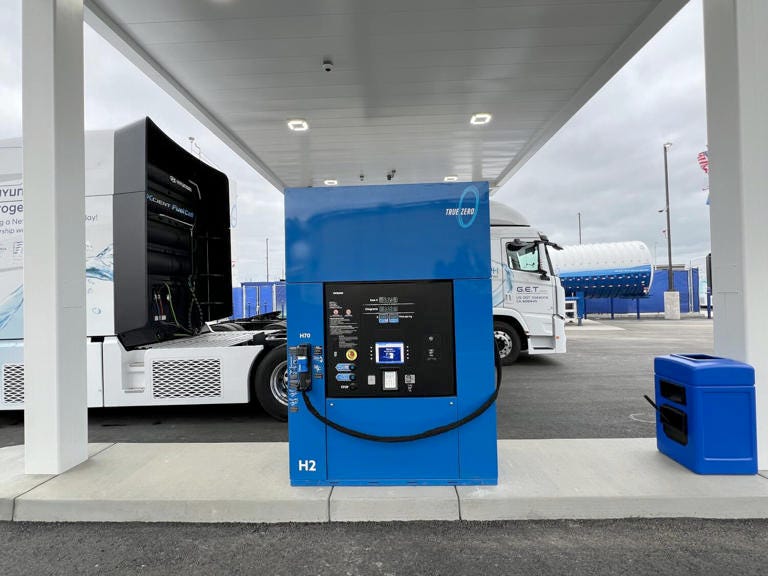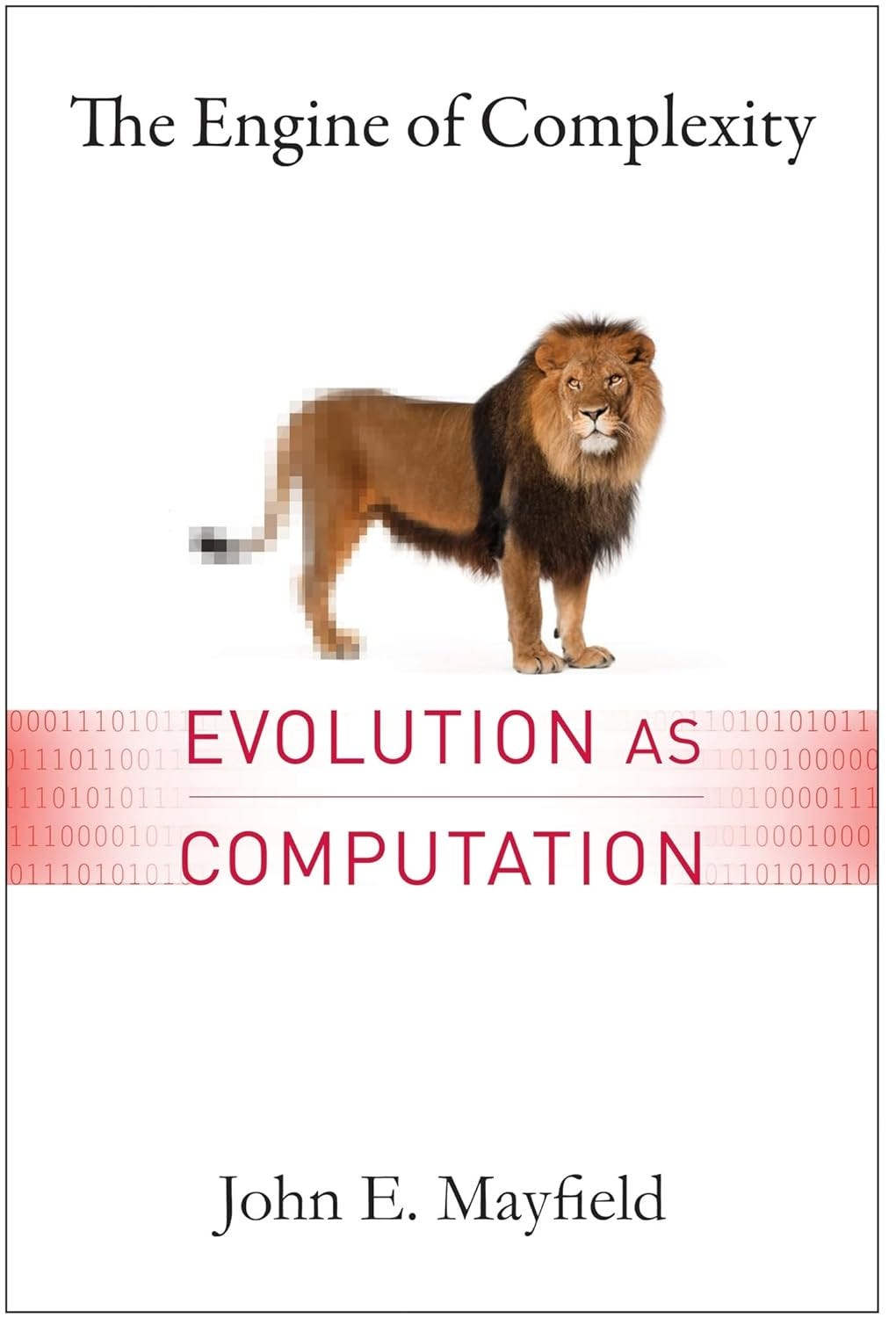🌀🗞 The FLUX Review, Ep. 146
May 16th, 2024

Episode 146 — May 16th, 2024 — Available at read.fluxcollective.org/p/146
Contributors to this issue: Dimitri Glazkov, Erika Rice Scherpelz, Jon Lebensold, Scott Schaffter, Justin Quimby, Boris Smus, Neel Mehta, Spencer Pitman, MK
Additional insights from: Ade Oshineye, Ben Mathes, Alex Komoroske, Robinson Eaton, Julka Almquist, Lisie Lillianfeld, Samuel Arbesman, Dart Lindsley, Melanie Kahl, Kamran Hakiman, Chris Butler
We’re a ragtag band of systems thinkers who have been dedicating our early mornings to finding new lenses to help you make sense of the complex world we live in. This newsletter is a collection of patterns we’ve noticed in recent weeks.
“When people will not weed their own minds, they are apt to be overrun by nettles.”
― Horace Walpole
🪱🍁 Cultivating innovation
Forests are some of the most fertile ecosystems on the planet. This is largely due to the layer of decaying organic matter — compost — which creates a fertile yet mostly stable biome upon which forest life depends. Compost provides forests with the rich nutrients that enable the forest biome. Environments that lack this combination of stability and fertility are much more hostile to plant growth. Just look at a rocky landscape (stable but not fertile) or the middle of a fast-flowing river (fertile but not stable).
Compost illustrates how ecosystems operate simultaneously as both supportive and restrictive forces. They support innovation by providing the nutrients and stability that things need to grow. Yet they also restrict innovation by constraining the diversity of what can successfully grow.
This juxtaposition appears to be the optimal setting for innovation. Change requires some amount of stability, but not too much. Too much stability and it’s hard to create space for change, akin to trying to grow on a rock. Too much chaos and it’s hard for anything to take root and grow, similar to growing in a river. Thus, compost serves as a stable yet flexible substrate that supports rapid growth and change — and continues accumulating through the process.
The Web is a great example of a compost-like ecosystem. It has enabled vast amounts of innovation but also limits what’s possible. We don’t have to go far to bump into the technological constraints around networking, permissions models, and the often-bemoaned dominance of JavaScript as the Web's programming language.
We see similar dynamics in organizational culture and product development. As we explored last week, organizational dynamics support change that is aligned with the organization’s underlying reinforcing loops while being downright hostile to the change that is not.
Compost provides nutrition for that which grows in it, like the idea-rich environments where creativity and innovation flourish, be it London in the 17th century, Paris in the 19th century, or Silicon Valley in the 20th.
What helps create these nutrient-rich environments? Literal compost needs material that can break down and accrete. Rich ecosystems need lots of raw materials to draw from. In intellectual ecosystems, this might be writers, innovators, or researchers, all of whom create the space of ideas. In a technical landscape, this might be building blocks like APIs and tools, which make it easy for people to assemble new ideas from a kit of parts. These inputs provide the raw material for new ideas to emerge.
However, for an environment to be truly fertile, there must be something that connects all of these ideas back to the ground truth of reality. Compost must have worms: agents that help break down the inputs into a source of nutrition. It is the digestive system of the worm that ultimately decides which material enriches the ecosystem. This could be other creators who are ingesting and transforming information. It could be influencers who are connecting it to broader audiences. Or it could be broader audiences who are choosing with their feet what is important and what is not. These worms of the system can sometimes be easy to dismiss (are influencers really useful?) but they play a critical role in producing the compost where innovation can happen.
The ideal compost is nutrient-rich, stable, and flexible. If we can create these sorts of fertile environments and if we’re willing to be gardeners who let the environment evolve without having to control every detail, then there’s potential for building something that can be an oasis of innovation and development.
🛣️🚩 Signposts
Clues that point to where our changing world might lead us.
🚏✈️ The Air Force had an AI fighter pilot battle against a human pilot
The US Air Force recently revealed that an AI-controlled fighter jet faced off against a human fighter pilot in an in-air (not simulated!) dogfight over an air force base. There were human pilots in the AI-powered jet, but they never needed to use the safety switch. The Air Force didn’t reveal which plane “won” the fight, but the two planes were able to get up close and personal without crashing, getting within 2000 feet of each other while flying at 1200 miles per hour.
🚏⛱️ Pokémon Go players put fake beaches on OpenStreetMap to catch a rare Pokémon
In the popular VR mobile game Pokémon Go, where players walk around the real world to catch Pokémon, certain rare monsters are only available in certain “biomes” — grass types in forests, bats in mountainous areas, etc. Pokémon Go draws location information from the open-source geographic database OpenStreetMap. So, some enterprising players started editing OpenStreetMap to put beaches in the middle of cities, which would help them catch the rare Wiglett — but, as a side effect, they messed up the public maps for everyone else.
🚏💧 The US’s first hydrogen fuel station for trucks has opened
A new commercial hydrogen station for big-rig trucks — the first of its kind in the United States — has recently opened at the Port of Oakland in California. The station can service up to 30 fuel-cell trucks, and it’s the first fruit of the US’s $8 billion investment in creating “hydrogen hubs” (that is, hydrogen fuel stations) across the country. California alone aims to build 60 stations with its $1.2 billion in funding.
🚏🚢 China has unveiled a fully-electric, 10,000 ton container ship
China’s state-owned shipping company has launched a gigantic fully-electric container ship; according to the company, it has the greatest length, width, container capacity, deadweight tonnage (i.e. raw weight), and battery capacity of any electric container ship out there. By their estimate, the ship — which can hold enough battery power to replace 15 tons of fuel — will be able to save 3,900 kg (8,600 pounds) of carbon dioxide emissions for every 100 nautical miles traveled.
📖⏳ Worth your time
Some especially insightful pieces we’ve read, watched, and listened to recently.
Dangerous Protocols (Summer of Protocols) — Argues that protocols, initially seen as tools for decentralizing and saving us from control, have themselves evolved into complex systems of social control by integrating deeply into our identities and shaping our behavior in both overt and subtle ways.
Writing With AI (iA) — Writes that thinking in dialogue is easier and more entertaining than struggling with feelings, letters, grammar and style all by ourselves. A nice overview of the AI–human co-writing design space, including a spectrum of assistance from a discussion partner who helps prepare writing, to a full-on ghost-reader and ghostwriter without checks and balances.
How Might We Learn (Design Lab) — Andy Matuschak walks us through some counterintuitive explorations of the conditions in which we learn (and those in which we think we learn), and some ways that AI tools may unlock better learning and understanding for us going forward.
Rabbit Holed (Where’s Your Ed At) — Tech critic Ed Zitron’s research surfaces some surprising and even dubious connections between Rabbit R1 (the new “AI pin”), crypto scams, and the metaverse.
📚🛋️ Book for your shelf
A book that will help you dip your toes into systems thinking or explore its broader applications.
This week, we recommend The Engine of Complexity: Evolution as Computation by John E. Mayfield (2013, 416 pages).
In The Engine of Complexity, John Mayfield suggests that there is a more-than-metaphorical relationship between evolution and computation — indeed, evolution is a type of distributed, multi-generational processing. Mayfield examines how genetic information and environmental interactions drive the evolution of increasingly complex organisms, including how DNA accretes memory across species and iterations. Despite being published in 2013, this feels prescient today given how LLMs and transformer models are trained and produce information. In a prophetic stroke, Mayfield posits that the rules governing evolution mirror those of computational algorithms, where random mutations and natural selection act as mechanisms for solving the problem of survival in an ever-changing environment.
Throughout the book, Mayfield uses the metaphor of an “engine” to describe how evolution operates systematically to increase biological complexity over time. He teases out several key principles of information theory and computer science to explain how genetic code and evolutionary processes can be understood through the lens of computation, though the scope of his reasoning includes cultural and linguistic evolution as well. Intuitively, this is reversible as well. This all resonates with the idea that technology is an extension of human evolution, not simply a creation of our ingenuity.
Keeping in mind that this book is over a decade old, it’s exciting how Mayfield explores the way that examining biological systems as algorithms not only enhances our knowledge of life’s evolutionary history but also informs the development of artificial intelligence and other computational technologies. By bridging the gap between biology and computation, The Engine of Complexity offers a unique lens through which to view the natural world and to reflect on how jumpstarted technologies like LLMs may continue to evolve as we introduce different fitness pressures to them.
© 2024 The FLUX Collective. All rights reserved. Questions? Contact flux-collective@googlegroups.com.




Also, compost is made up of the remains of both successful and failed experiments of the past. Interesting.
Great article. Of the many places where I struggle, one is that those who consider themselves worms can often be detrimental to the ecosystem. In nature, worms have a simple and set purpose. In human organizations, many of those nutrient makers inject their own complex opinions and tend to dismiss the other organisms' needs. As an example a platform engineer may make a tool that strongly ties to a development pattern that they use, which is not fine when (a) that pattern isn't used by many others and (b) that pattern is fundamentally flawed.
So how can human systems deal with worms that are bad for the ecosystem?